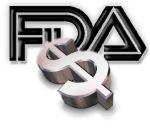
Regulatory Developments for eSubmissions
A few months ago, GxP Perspectives discussed eCTD as a Required Format for FDA Submissions. To summarize, in PDUFA V Commitment Letter 8-31-2011, the agency announced their intention of issuing draft guidance for required electronic submissions in eCTD format by December 31, 2012, with final guidance no more than 12 months after the close of the public comment period. Twenty-four months after publication of the final guidance, electronic submissions will be required for all new NDA and BLA submissions (originals, supplements and amendments) with a few specified exceptions. In this update, Kathie Clark discusses upcoming requirements, developments, and incentives for sponsors of clinical research.
Recent eSubmission-Related Regulatory Developments and the Impact on Sponsors
by Kathleen Clark
The regulatory authorities have been busy announcing plans and issuing new guidance related to eSubmissions in recent months. Legislation has been proposed to expedite review of generic drug applications and improve communication between FDA and industry – Generic Drug User Fee Act Program (GDUFA). GDUFA includes goals for FDA such as reviewing and acting on 90% of complete ANDAs within 10 months after the date of submission – but these goals only apply to submissions made electronically, following the eCTD format.
New Initiatives in Europe

New Developments in Europe
In Europe, the big news has been the eXtended EudraVigilance Medicinal Product Report Message (XEVPRM). XEVPRM is an XML-based message format that defines the structure and data elements required to unambiguously identify a medicinal product. European Medicines Agency requires that by July 2, 2012, information on medicinal products for human use authorized or registered in the Union is submitted electronically in this format. Sponsors are scrambling to meet this mandate as guidance has been finalized only recently.
Sponsors are often challenged to locate the data needed for submission, and ensure that it is complete and accurate. Vendors have been following the initiative closely, but even so, deploying and validating systems to publish the new message and putting in place the business processes around their use is a significant effort. Some aspects of the mandate remain unclear.
Another ongoing initiative in Europe is the pilot program for the new electronic Application Form, or eAF. The eAF is actually a collection of electronic Application Forms for human and vet med MAAs as well as variations and renewals. These are PDF fillable forms requiring extensive, detailed information for completion. Use of the electronic application forms is expected to yield the following benefits:
• Improvements to data quality and consistency during data entry
• Access to the underlying data entered into the forms in an XML format
• Integration with dynamic lists of controlled terminologies
The eAF pilot commenced on March 12th 2012 and is expected to run for four months.
FDA’s New Validation Criteria and Module 1
The FDA has finalized new eCTD Validation Criteria. They have not yet announced an implementation date, which will be set at least one month in advance of enforcement. The validation criteria represent a major overhaul:
• 56 new validation checks (5 high, 36 medium, 15 low) – 12 checks will be removed
• 161 unique error conditions – of which 22 errors can cause a technical rejection
In the past, the FDA has not validated the actual PDFs that make up the majority of an eCTD submission. The new criteria require extensive validation of the PDF files themselves. This includes validation of
• Fonts (use of standard fonts embedded where required)
• PDF format (1.4 or 1.7)
• Absence of applied security (either password protection or restrictions such as preventing the selection of text)
• Generation of PDFs in a manner that allows them to be text selectable (from electronic sources as opposed to scanned)

FDA’s New eCTD Validation Criteria
be validating bookmarks and hyperlinks to ensure that they are valid and don’t point to external or non-relative locations. Finally, the FDA has provided rules to help sponsors correctly name and place their PDF fillable forms. This is essential as the FDA reads data from these forms that allows submissions to be processed by their automated software, without manual intervention. This is also important to sponsors, as failing to supply valid forms can result in up to five days delay in processing a sequence.
A fillable form should always be submitted, and should be named properly. As FDA requires forms to be signed, if sponsors have trouble applying digital signatures, they should still fill out a PDF form, print, sign, scan, and submit both forms. For details, see the FDA presentation CDER Update: eCTD & Gateway Submissions.
FDA’s Draft Module 1 Guidance
The FDA plans major changes for Module 1, and have issued new draft US Module 1 and Comprehensive Table of Contents Headings and Hierarchy Guidance. These guidances are still subject to change and not likely to be implemented until early 2013. The changes include:
• Allowing for bundled submissions (one sequence submitted to multiple applications). Examples of bundled submissions include new manufacturing site, change in API source, a drug substance change that applies to multiple dosage forms of the same drug, changes in packaging, etc.
• Ability for attribute display values to be updated without having to update the Specifications, eCTD TOC, and DTD .
• Revision of heading elements.
• Addition of new headings and sub-headings, including detailed definition under m1.15 Promotional material. These additions are too numerous to mention but are summarized in Appendix 2 of the comprehensive Table of Contents. (The FDA has emphasized that promotional materials are still not accepted in eCTD format at this time.)
• Addition of new attributes in Module 1 (under m1-forms and m1-15-promotional-material).
• Additions and changes to Module 1 metadata. These are too numerous to mention but are summarized in Appendix 2 of The eCTD Backbone Files Specification for Module 1.
Finally, the FDA has updated the way it organizes regulatory activities within an application. (A regulatory activity is a set of sequences that together constitute a claim, e.g. an original application, supplement or annual report). There are three levels of organization:
• Application (e.g., NDA, BLA, IND)
• Submission Type (e.g. Original Application, Efficacy Supplement, Safety Reports)
• Submission Sub-Type (e.g. Application , Amendment, Resubmission)
Valid Submission types will be based on the Application Type, e.g., an efficacy supplement can be associated with an NDA or BLA but not an IND. The FDA provided a figure to illustrate how the approach works in comparison with the previous approach.


You can see a number of FDA presentations on the topic of Module on the Electronic Submissions Presentations page.
Health Canada Updates
Health Canada is also planning extensive changes. They have issued new draft guidance for CTD, eCTD and Module 1. Health Canada is formalizing the concept of Regulatory Activities through use of the related-sequence metadata. Their regulatory activities are defined in their Module 1 guidance and include New Drug Submission, Supplement to a New Drug Submission, Abbreviated New Drug Submission, Clinical Trial Application and many more. Clinical Trial Applications are not yet being accepted in eCTD format but that is expected to start around the end of 2012.
There are many changes to the table of contents, including correspondence organized under 1.0, much more granularity around 1.2 Administrative Information, more headings under Product Information (IB, more labeling elements, PV/Risk Management plans and information), change of 1.6 Electronic Review Documents into Regional Clinical Information, a new section 1.7 for CTA information, and a new regional quality section, 2.2.R.4 Yearly Biologic Product Report.
 Health Canada is also making major changes in its Module 1 metadata, including adding elements applicant, product-name, dossier-identifier, dossier-type, regulatory-activity-type, regulatory-activity-lead and removing elements submission-identifier, and submission-date.
Health Canada is also making major changes in its Module 1 metadata, including adding elements applicant, product-name, dossier-identifier, dossier-type, regulatory-activity-type, regulatory-activity-lead and removing elements submission-identifier, and submission-date.
Finally, on the technical front, the eCTD guidance calls for a technical change to the use of a Schema instead of DTD.
What Can Sponsors Do to Prepare?
Although some of these changes are only in draft or pilot stages, preparation should begin now. Suggested preparation steps include:
• Review the guidance documents and agency presentations
o Ask questions – esub@fda.hhs.gov is a great resource for FDA issues if you need clarification
• Understand the new documents required in the CA/US M1
o Do they already exist and are just not submitted? Or must they be created? Under which circumstances?
o Are they being created using high quality templates authored to the correct granularity?
o How will you handle promotional materials with non-traditional formats (movies, artwork, etc.)?
• Review the new validation criteria
o Are PDFs being created in a compliant manner?
o Are US Fillable Forms being created and published correctly?
=====
EudraVigilance Medical Product Dictionary
FDA Electronic Submissions Page
Kathie Clark is Director, Product Management for NextDocs, a leading provider of SharePoint based content and quality management systems for Life Sciences. Kathie has an extensive background in document management and electronic submissions for the global life sciences industry and has written extensively about industry challenges in blog posting, journal articles and white papers. You can reach her at kclark@nextdocs.com or follow her on twitter at @kathie_clark.
====
This is the 200th post on GxP Perspectives! Join the GxP Perspectives Linkedin Group Here
Or get an email subscription (on the right sidebar)
====
Also this marks three years for the great blog by Steven Grossman, FDA Matters. Congratulations Steven! You can read his post on FDA, Me, and Maybe the Mafia!
0.000000
0.000000




 Posted by GxP Perspectives
Posted by GxP Perspectives 



































